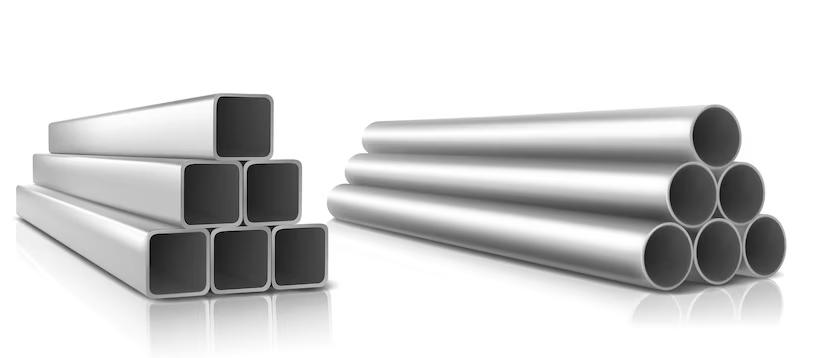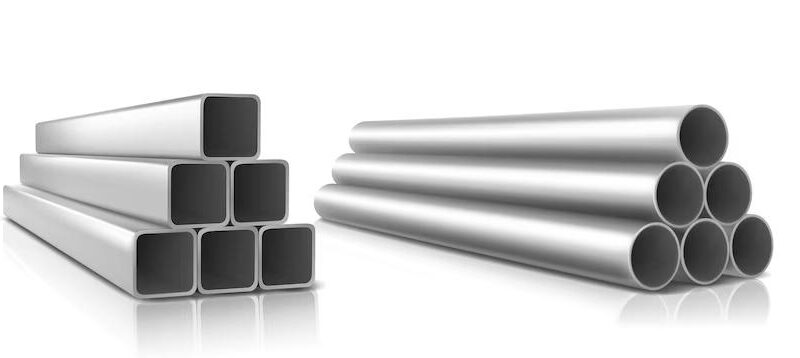
A Stainless steel tube is a hollow, long, round steel mostly used in mechanical instruments, industrial pipelines, medical and food equipment, and light industry. What are the primary distinctions between seamless and welded stainless steel pipes?
Before you purchase a 316 seamless tube, you must understand the making and importance of stainless steel seamless tubing.
Concentricity
A hole must be punched out of a stainless steel material billet at a high temperature of 2200 °F to create a seamless steel pipe. At this temperature, tool steel softens and is created spirally from the hole by pressing and drawing from the billet. As a result, the pipe’s wall thickness is inconsistent, and its eccentricity is significant.
As a result, ASTM permits the seamless pipe’s wall thickness difference to be greater than the grooved pipe’s wall thickness difference. The precise cold-rolled plate used to create the seam pipe has a roll width of 4-5 feet per roll. These cold rolled plates’ maximum wall thickness variation is approximately 0.002 inches. The pipe’s outer diameter, d, is used to determine how wide to cut the steel plate. Wall thickness tolerances are minimal, and the thickness of the walls throughout the entire diameter is highly consistent.
Welding Efficiency
The chemical makeup of the seamless tube and the seam has certain general variances. Only the fundamental standards of ASTM must be met in producing seamless steel. While the chemical composition of woven steel is suited for welding. In a specific ratio of mixing, certain components, such as silicon, sulfur, manganese, oxygen, and triangular ferrite, can be created during the welding process, making it simple to pass the weld’s heat and ensure complete weld penetration. In the welding process, the absence of the aforementioned chemical structure of the steel pipe, including the seamless tube, will result in several unstable variables that are difficult to weld, weld, and weld fully.
Grain Size
The temperature needed and duration of the heat treatment process impact the metal’s grain size. The grain size of seamless and annealed seamed stainless steel tubes is the same. The grain size of the weld is lower than that of the metal being welded if the seam is machined with little cooling; otherwise, the grain sizes are the same.
Corrosion Protection
The composition of the alloy affects corrosion resistance as well. Both seamless stainless steel tubes and fully treated with heat seamless steel pipes have the same chemical makeup, making them equally corrosion-resistant. The supplementary test conducted by ASTM demonstrates that the corrosion resistance at the welding point is on par with or superior to that of the metal being welded. The corrosion of the welded joints of the inadequate heat treatment is increased in the acidic chloride setting, although this just necessitates corrosion testing. The environment is not that horrible.
Adaptability And Extensibility
The ASTM tests that involve bending the weld 45 degrees, 90 degrees, and flattening it along the weld can be used to confirm that it has extended. After that, spin the stainless steel seam and repeat the tests to bend the weld 180 degrees. The weld quality is 40 times better than the standard. The case’s magnification prevents intergranular or tear separation. The minimal bending radius for pipelines is typically 2 d, and the alloy composition regulates this radius. The weld should be pressured or neutral for the best welding results. Additionally, the pipe needs to be annealed to lessen its hardness, enhancing its ability to bend.
In general, the sewn stainless steel pipe has better quality than a seamless stainless steel tube since it is constructed from a precise cold-rolled plate that has been tested, limiting any flaws to the weld. The wall created via extrusion suffered significant ripping due to the seamless pipe’s construction from stainless steel billet pounding. The vortex test reveals that the sewn stainless steel pipe typically has a lower fault rate than a seamless steel tube. The audible background of seamless stainless steel tubes is so great during ultrasonic testing that it is challenging to detect flaws. While the stainless steel tube is sewn, little ambient noise makes marks very easy to spot.

